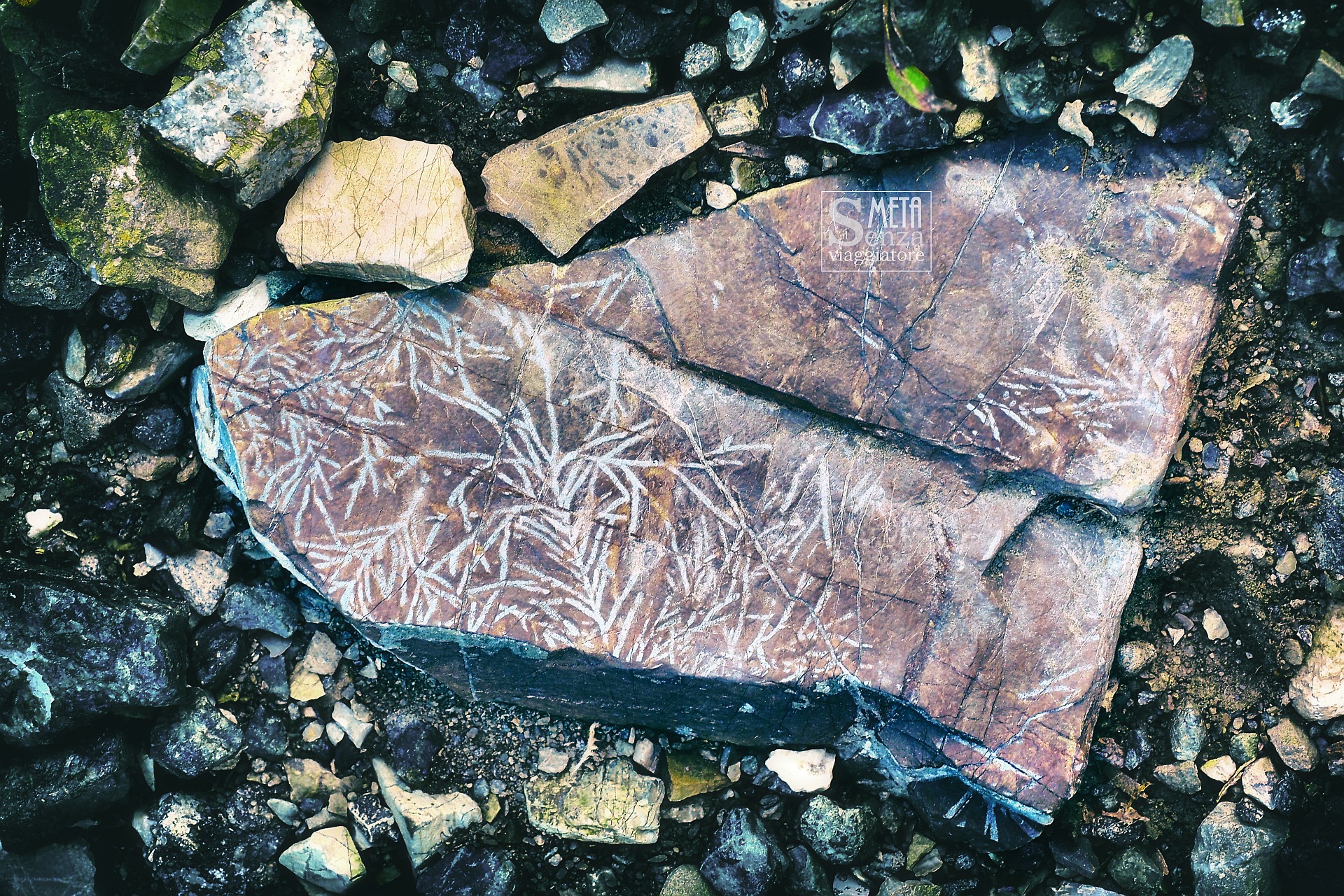TRACCE DI ICNOFOSSILI
Tracce di icnofossili trovate in un sasso di roccia calcarea in Val Mozzola, nell'appennino Parmense. Si tratta di tracce di Condrites (probabilmente Fucoides), ovvero impronte lasciate dal passaggio di antichi organismi viventi del tipo dei vermi, o dei cunicoli da loro scavati, poi con il tempo riempiti dal sedimento di altre sostanze minerali. Questi antichi organismi si spostavano sul fondo marino alla ricerca di cibo, o comunque, essendo viventi, si spostavano per fare i cavoli loro ! I geologi più esperti sapranno anche stimare il genere di attività svolta dall'arcaico e indaffarato vivente, in base al tipo di tracce lasciate (Cubichnia: tracce di riposo; Repichnia: tracce di spostamento; Pascichnia: tracce di nutrimento; Fodinichnia: tracce di esplorazione; Domichnia: tracce di abitazione).
Se c'e' una cosa che non sopporto quando guardo i documentari sui comportamenti animali, è la loro "umanizzazione", ovvero il proiettare la tipica mentalità umana (occidentale) nella psicologia degli animali, che poi è un attimo, per chi li guarda senza spirito critico, fare il processo inverso ed accettare certi valori e certi comportamenti come "naturali" in quanto "presenti" in natura: in realtà più che presenti, direi presentati, in modo ossessivo e martellante come certe pubblicità; a me danno sinceramente l'impressione di essere un racconto romanzato o un'interpretazione, che potrebbe anche essere molto distorta. A volte mi domando se veramente sia proprio così la vita: se tutto si riduca alla demarcazione del territorio, al cibo, al maschio dominante, al corteggiamento... sarebbe una cosa molto triste e banale ! Ma guardandomi attorno, forse è proprio così !

>>> Il Viaggiatore senza Meta <<<
Free Wild Spirit - You will never have me - by Andrea Franchi - all rights reserved

